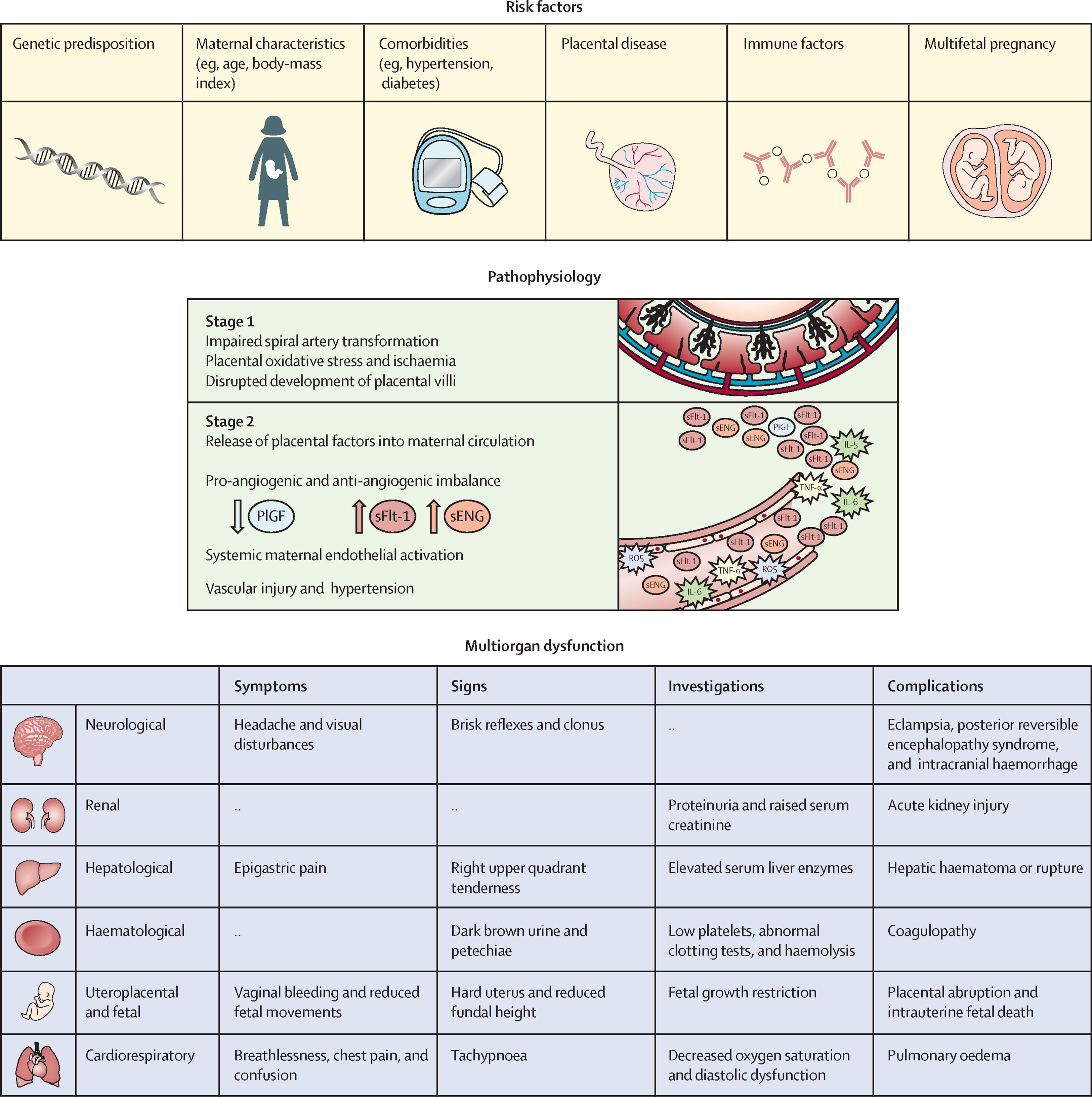Risk Factors
Risk Factors ( 5 Questions)
A nurse is monitoring a client who is 34 weeks pregnant and has mild preeclampsia.
Which of the following laboratory tests should the nurse review to assess for end-organ damage in this client?
Hemoglobin and hematocrit are not specific indicators of end-organ damage in preeclampsia. They may be elevated due to hemoconcentration from fluid retention or decreased due to hemolysis.
Liver enzymes and platelets. The nurse should review these laboratory tests to assess for end-organ damage in a client with mild preeclampsia because they indicate the status of the liver and the coagulation system, which are often affected by this condition.

Normal ranges for liver enzymes and platelets are:
• AST: 10-40 U/L
• ALT: 7-56 U/L
• ALP: 44-147 U/L
• LDH: 140-280 U/L
• Platelets: 150,000-400,000/mm3
Blood glucose and ketones are not related to preeclampsia. They are more relevant for gestational diabetes mellitus, which is a different complication of pregnancy.
Creatinine and blood urea nitrogen are not the most sensitive markers of end-organ damage in preeclampsia. They may be elevated due to renal impairment, but proteinuria is a more classic sign of preeclampsia.
Liver enzymes and platelets. The nurse should review these laboratory tests to assess for end-organ damage in a client with mild preeclampsia because they indicate the status of the liver and the coagulation system, which are often affected by this condition.
Choice A is wrong because hemoglobin and hematocrit are not specific indicators of end-organ damage in preeclampsia. They may be elevated due to hemoconcentration from fluid retention or decreased due to hemolysis.
Choice C is wrong because blood glucose and ketones are not related to preeclampsia. They are more relevant for gestational diabetes mellitus, which is a different complication of pregnancy.
Choice D is wrong because creatinine and blood urea nitrogen are not the most sensitive markers of end-organ damage in preeclampsia. They may be elevated due to renal impairment, but proteinuria is a more classic sign of preeclampsia.
Normal ranges for liver enzymes and platelets are:
• AST: 10-40 U/L
• ALT: 7-56 U/L
• ALP: 44-147 U/L
• LDH: 140-280 U/L
• Platelets: 150,000-400,000/mm3
Liver enzymes and platelets. The nurse should review these laboratory tests to assess for end-organ damage in a client with mild preeclampsia because they indicate the status of the liver and the coagulation system, which are often affected by this condition.

Choice A is wrong because hemoglobin and hematocrit are not specific indicators of end-organ damage in preeclampsia. They may be elevated due to hemoconcentration from fluid retention or decreased due to hemolysis.
Choice C is wrong because blood glucose and ketones are not related to preeclampsia. They are more relevant for gestational diabetes mellitus, which is a different complication of pregnancy.
Choice D is wrong because creatinine and blood urea nitrogen are not the most sensitive markers of end-organ damage in preeclampsia. They may be elevated due to renal impairment, but proteinuria is a more classic sign of preeclampsia.
Normal ranges for liver enzymes and platelets are:
• AST: 10-40 U/L
• ALT: 7-56 U/L
• ALP: 44-147 U/L
• LDH: 140-280 U/L
• Platelets: 150,000-400,000/mm3
